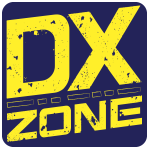WSJT-X: New in Version 2.2.0
Improvements to decoders
FT4: Corrected bugs that prevented AP (a priori) decoding and/or multi-pass decoding in some circumstances. Improved and extended the algorithm for AP decoding.
FT8: Decoding is now spread over three intervals. The first starts 11.8 s into an Rx sequence and typically yields around 85% of the possible decodes, so you see most decodes much earlier than before. A second processing step starts at 13.5 s, and the final one at 14.7 s. Overall decoding yield on crowded bands is improved by 10% or more. Systems with receive latency greater than 0.2 s will see smaller improvements, but will still see many decodes earlier than before.
SNR estimates no longer saturate at +20 dB, and large signals in the passband no longer cause the SNR of weaker signals to be biased low. Times written to cumulative journal file ALL.TXT are now correct even when the decode occurs after the T/R sequence boundary. In FT8 DXpedition Mode, AP decoding is now implemented for Hounds when the Fox has a compound callsign.
JT4: Formatting and display of averaged and Deep Search decodes has been cleaned up and made consistent with other modes used for EME and extreme weak-signal work on microwave bands.
JT65: Many improvements have been made for averaged and Deep Search decodes, and their display to the user. For details see JT65 in the VHF+ Features section of this guide.
WSPR: Significant improvements have been made to the WSPR decoder’s sensitivity, its ability to cope with many signals in a crowded sub-band, and its rate of undetected false decodes. We now use up to three decoding passes. Passes 1 and 2 use noncoherent demodulation of single symbols and allow for frequency drifts up to ±4 Hz in a transmission. Pass 3 assumes no drift and does coherent block detection of up to three symbols. It also applies bit-by-bit normalization of the single-symbol bit metrics, a technique that has proven helpful for signals corrupted by artifacts of the subtraction of stronger signals and also for LF/MF signals heavily contaminated by lightning transients. With these improvements the number of decodes in a crowded WSPR sub-band typically increases by 10 to 15%.
New message format: When EU VHF Contest is selected, the Tx2 and Tx3 messages — those conveying signal report, serial number, and 6-character locator — now use hashcodes for both callsigns. This change is not backward compatible with earlier versions of WSJT-X, so all users of EU VHF Contest messages should be sure to upgrade to version 2.2.0. See Contest Messages for details.
Minor enhancements and bug fixes
- Save None now writes no .wav files to disk, even temporarily.
- An explicit entry for WW Digi Contest has been added to Special operating activities on the Settings | Advanced tab.
- The contest mode FT4 now always uses RR73 for the Tx4 message.
- Keyboard shortcuts have been added as an aid to accessibility: Alt+R sets Tx4 message to RR73, Ctrl+R sets it to RRR.
- The Status bar now displays the number of decodes found in the most recent Rx sequence.
- As an aid for partial color-blindness, the “inverted goal posts” marking Rx frequency on the Wide Graph’s frequency scale are now in a darker shade of green.
Language localization
This new version will be available also in other languages. First language available is Catalan, Spanish is on the way, and other languages when translations will be made available.
Supported Operative Systems
As announced with RC3 version, starting from this version, WSJT-X will not work anymore on Windows XP and Windows Vista.
WSJT-X will run on Windows 7 and Higher, Apple Mac OS X 10.12 and later, Linux Debian, Ubuntu, Raspbian, CentOS, RedHat, Fedora.
New FT8 Frequencies
New default FT8 Frequencies has been added to the buil-in frequency list. As explained in our article, upgrading to new version will require to manually reset the list settings.
About WSJT-X
WSJT-X is a computer program designed to facilitate basic amateur radio communication using very weak signals.
WSJT-X Version 2.2 offers ten different protocols or modes: FT4, FT8, JT4, JT9, JT65, QRA64, ISCAT, MSK144, WSPR, and Echo. The first six are designed for making reliable QSOs under weak-signal conditions. They use nearly identical message structure and source encoding. JT65 and QRA64 were designed for EME (“moonbounce”) on the VHF/UHF bands and have also proven very effective for worldwide QRP communication on the HF bands


